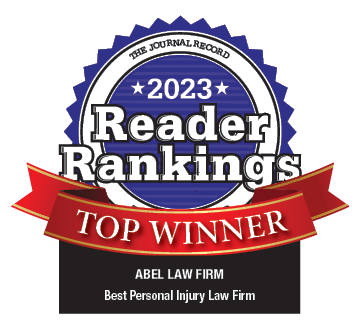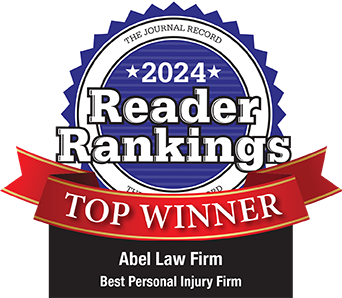The affirmative defense of “assumption of the risk of a known defect” in manufacturers’ products liability cases is not to be confused with “assumption of risk” in negligence actions. Kirkland v. General Motors Corp., 1974 OK 52, 521 P.2d 1353, 1365-1366. “Complicated semantic difficulties arise when the defense of assumption of risk is considered. In order to avoid abuse of this legitimate defense, or confusion of same with its common law counterpart of the same name, it should be narrowly defined as voluntary assumption of the risk of a known defect.” Id. at 1366-1367. It consists of voluntarily and unreasonably encountering a known danger in the product. Id.; OUJI-CIV 2d 12.10.
The injured party must be the one to assume the risk. When a fire escape broke loose from a hospital wall, the defendants in Hawkins v. Larrance Tank Corp., 1976 OK CIV APP 2, 555 P.2d 91, 95, claimed a hospital’s “misuse” of bolts by installing them in bricks and mortar was a defense to the plaintiff’s claim. The Court held any such action could not be imputed to the plaintiff unless he himself misused the fire escape or voluntarily assumed the risk of a known defect.
The injured person’s subjective awareness is necessary. The plaintiff in Hogue v. A. B. Chance Co., 1979 OK 2, 592 P.2d 973, was installing power lines on a utility pole while a line on the other side of the cross-arm was energized. In adjusting the position of his basket, he was shocked when the control handle became energized. Id. at 974. The trial court granted summary judgment to the defendant, finding: “The uncontroverted facts show that the proximate cause of the accident was the acts of the plaintiff voluntarily and knowingly failing to use the protective equipment and safeguards which were furnished and required by his employer with plaintiff’s knowledge that the subject aerial platform unit could not insulate him from outside grounding sources, which action by the plaintiff was voluntary assumption of a known risk ….” Id. In reversing, the Supreme Court found the failure to wear insulated gloves might be contributory negligence, but “…[i]t is not a relevant consideration in the manufacturers’ products liability action unless there is a showing plaintiff knew the boom was not insulated and that he would be exposed to possible electrocution through the handle if he did not wear the gloves.” Id. at 975. Since he testified he thought the basket was fully insulated, summary judgment should not have been granted.
In Jordan v. General Motors Corp., 1979 OK 10, 590 P.2d 193, the plaintiff’s car wrecked as a result of a stabilizer bar problem. Although the plaintiff knew the car was veering, he did not know why. It was properly submitted to the jury to decide if “… the plaintiff’s awareness of a defect and his continued use of the vehicle proximately caused the accident …” Id. at 196.
There was sufficient evidence in Bingham v. Hollingsworth Mfg. Co., Inc., 695 F.2d 445 (10th Cir. 1982) to submit an assumption-of-risk instruction when a woman lost control of her half-ton pickup as she was hauling a four-ton fertilizer spreader down a steep hill. The question was how specific the plaintiff’s knowledge had to be. She did not know the spreader had no brakes, but she knew it was a big load. Id. at 448-449. While the evidence might not have been sufficient to grant summary judgment, when direct evidence of a plaintiff’s knowledge is unclear, it may be submitted to the jury, which is free to impute knowledge to her through circumstantial evidence. Id. at 449, 452. “The undertaking considering the terrain and the disproportionate weight of the pick-up in relation to the trailer created a risk of great magnitude which was obvious.” Id. at 451.
In Smith v. FMC Corp., 754 F.2d 873 (10th Cir. 1985), two workers were killed when a crane dropped a piece of steel on them. The defendant claimed they assumed the risk of injury by not telling anyone they were in a silo over which steel was being passed. The Court found it was error to give an assumption-of-risk instruction. Id. at 876. “… [Defendant] made no showing whatsoever that, assuming there was a defect [in the crane], appellants’ decedents knew of such risk and knowingly assumed the risk.” Id. at 877. “Even were we to assume that the decedents were aware that the crane was moving steel over their heads and that they (decedents) negligently failed to alert their co-workers, such non-action cannot be construed to be the voluntary assumption of a known risk, since the record fails to establish a known risk (defect) in the crane on the job site.” Id. The danger of falling steel was not the issue. There was no evidence the men were aware of a problem in the crane that would cause the steel to fall.
In a case involving the defense of misuse, Justice Opala, dissenting, thought the defendant was entitled to an instruction on voluntary assumption of the risk of a known defect because of evidence the plaintiff failed to follow instructions to mount a tire on a tire machine. Treadway v. Uniroyal Tire Co., 1988 OK 37, 766 P.2d 938, 947. “… [V]oluntary assumption of or exposure to the risk from a known defect or danger … is a variant of the common-law concept known by the Latin maxim of volenti non fit injuria. … The maxim …, which means that a person who consents to an act is not wronged by it, is predicated on the theory of knowledge and appreciation of the danger and voluntary assent to the risk associated with it.” Id. at 945, 946 (f.n. 4).
“The defenses of assumption of risk and contributory negligence, although closely allied, are conceptually distinguishable. While they may arise under the same set of facts and thus sometimes overlap each other, they are founded on separate and distinct principles of law. … Assumption of risk involves voluntary exposure to a known danger and entails both a subjective knowledge and appreciation of the risk involved as well as a voluntary acquiescence. In contrast, contributory negligence is based on an objective standard of conduct which, though it may be inadvertent, falls below the degree of care which would have been exercised by a reasonable person. … It implies the omission of a duty on the part of the injured person and excludes the idea of willfulness. …” Id. (f.n. 8).
Justice Opala thought Uniroyal mischaracterized its defense as misuse, when the evidence actually demonstrated voluntary assumption of the risk of a known defect. Id. at 948. “Uniroyal’s critical defense targets Treadway’s disregard of known instructions and appreciated danger.” Id. at 949. The majority opinion found neither misuse nor assumption of risk. In the concurring opinion, Justice Hodges explained: “Treadway was mounting the tire, obviously a use for a proper purpose, but purportedly in a careless manner inasmuch as he did not follow the safety instructions and warnings of Uniroyal. In addition, Treadway’s conduct was reasonably foreseeable by Uniroyal. Treadway’s conduct constituted at most contributory negligence and as such cannot be considered as a complete defense in a manufacturers’ products liability case, unless this conduct was the sole cause of the accident.” Id. at 942; see also, Barber v. General Elec. Co., 648 F.2d 1272 (10th Cir. 1981) (failure to follow instructions is not voluntary assumption of risk unless the person is aware of a known defect).
In a case involving a farmer’s bypass-starting a tractor while standing on the ground, the Tenth Circuit stressed the question of subjective awareness is one of fact. McMurray v. Deere and Co., Inc., 858 F.2d 1436, 1440 (10th Cir. 1988). The defendant presented no direct or circumstantial evidence warranting a jury instruction on assumption of risk because there was no evidence the farmer knew the tractor could be bypass-started in gear. Id. “Any inferences that could be drawn constitute nothing more than pure speculation.” Id. at 1441. “… [W]e must hold that this fundamental error requires reversal for a new trial.” Id.
The Tenth Circuit again emphasized the need for subjective awareness of a defect in Holt v. Deere & Co., 24 F.3d 1289 (10th Cir. 1994). In answer to how specific the awareness must be, the Court concluded a jury should decide if the plaintiff assumed the risk of a known defect if he knew that the subject grader started in gear and did not check to see the grader was in neutral when he started it while standing on the ground. Id. at 1294. He did not need to know specific, technical information about the defect, but had to appreciate “… the specific dangers in using the specific product in the specific manner he was using it when the accident occurred.” Id. at 1293. Knowledge can be imputed from circumstantial evidence. Id. at 1294. “Mere carelessness, particularly if the result of ignorance or a false sense of security about the effectiveness of the grader’s neutral start switch, would not bar [the plaintiff’s] recovery under the assumption of risk doctrine.” Id. at 1293.
In Wheeler v. HO Sports Inc., 232 F.3d 754 (10th Cir. 2000), summary judgment was inappropriate when the victim’s knowledge of the characteristics of a wakeboarding vest were not clear. The plaintiff argued the manufacturer’s warning failed to apprize users the vest would cause them to float face-down. Id. at 758. Although the decedent knew he could drown while wakeboarding, the jury would have to decide if he knew how the vest would perform when he was unconscious in the water: “…what he in fact knew about the vest from the warning is precisely at issue.” Id. at 759. The danger of drowning was not the issue. The question, as in all products cases, was not whether the general activity was dangerous, but whether the plaintiff was subjectively aware the product being used was unreasonably dangerous beyond the contemplation of the ordinary user and whether he or she decided to proceed in spite of that knowledge.
–Lynn Brusin Mares


